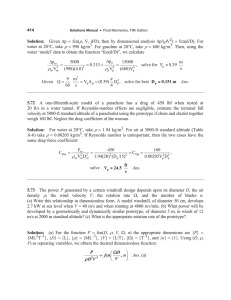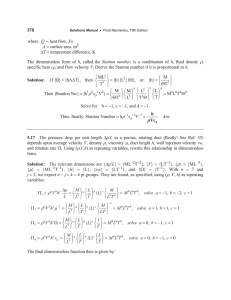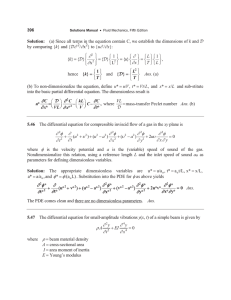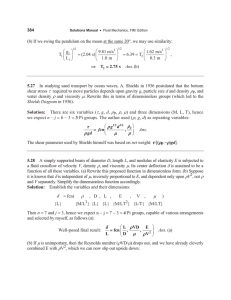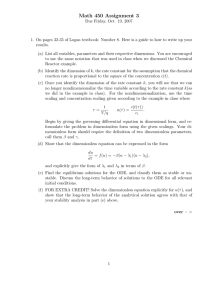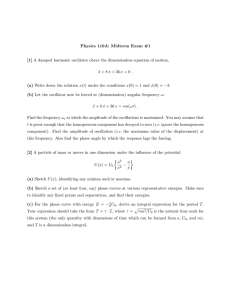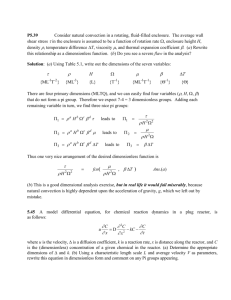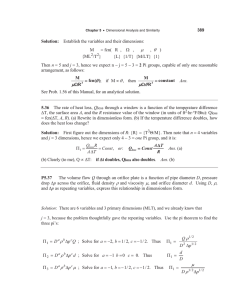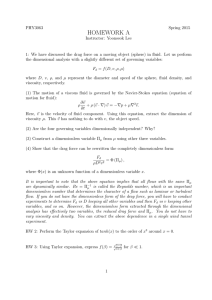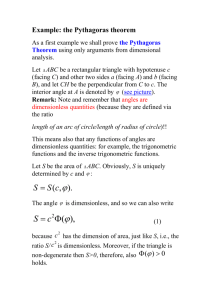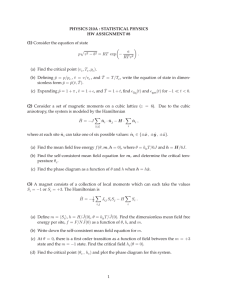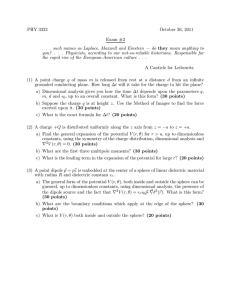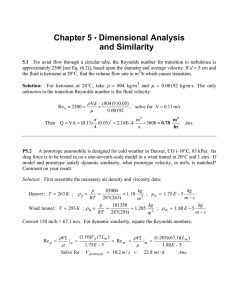U O which the simplest relation for stress versus strain-rate is the T
advertisement
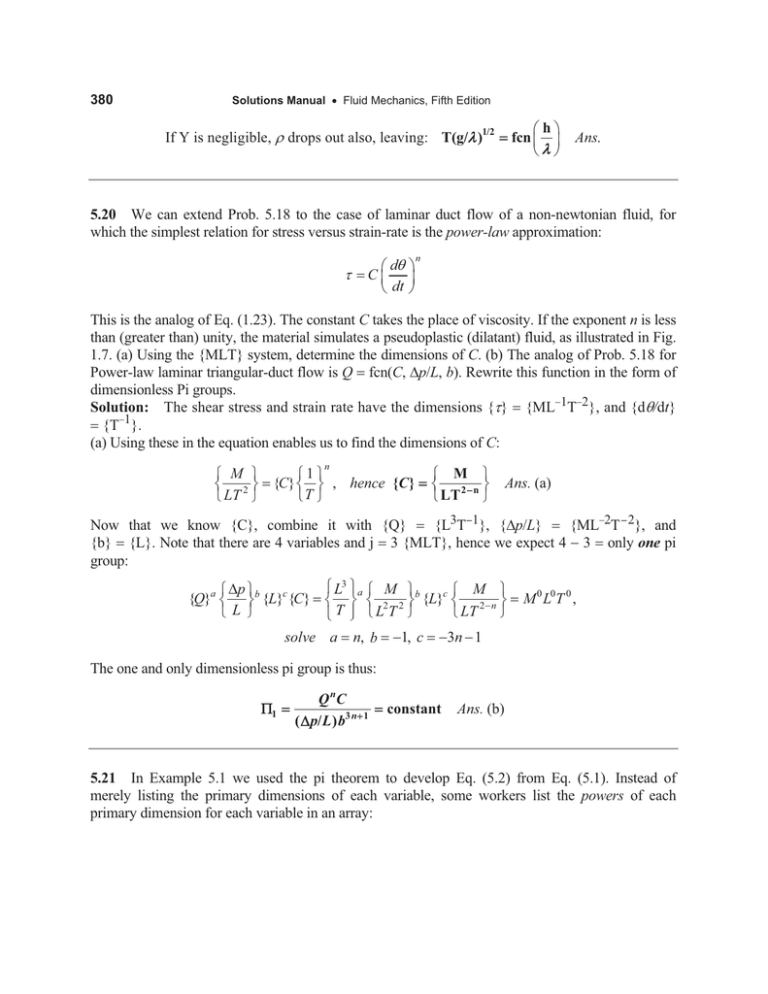
380
Solutions Manual x Fluid Mechanics, Fifth Edition
§h·
fcn ¨ ¸
©O¹
If Y is negligible, U drops out also, leaving: T(g/O )1/2
Ans.
5.20 We can extend Prob. 5.18 to the case of laminar duct flow of a non-newtonian fluid, for
which the simplest relation for stress versus strain-rate is the power-law approximation:
W
§ dT ·
C¨ ¸
© dt ¹
n
This is the analog of Eq. (1.23). The constant C takes the place of viscosity. If the exponent n is less
than (greater than) unity, the material simulates a pseudoplastic (dilatant) fluid, as illustrated in Fig.
1.7. (a) Using the {MLT} system, determine the dimensions of C. (b) The analog of Prob. 5.18 for
Power-law laminar triangular-duct flow is Q fcn(C, 'p/L, b). Rewrite this function in the form of
dimensionless Pi groups.
Solution: The shear stress and strain rate have the dimensions {W} {ML1T2}, and {dT/dt}
{T1}.
(a) Using these in the equation enables us to find the dimensions of C:
n
­ M ½
­1½
® 2 ¾ {C} ® ¾ , hence {C }
¯ LT ¿
¯T ¿
­ M ½
® 2n ¾
¯ LT ¿
Ans. (a)
{ML2T 2}, and
Now that we know {C}, combine it with {Q}
{L3T1}, {'p/L}
{b} {L}. Note that there are 4 variables and j 3 {MLT}, hence we expect 4 3 only one pi
group:
­ L3 ½ ­ M ½
­ 'p ½
­ M ½
{Q}a ® ¾b {L}c {C} ® ¾a ® 2 2 ¾b {L}c ® 2 n ¾
¯L ¿
¯ LT ¿
¯ T °¿ ¯ L T ¿
solve a n, b 1, c 3n 1
M 0 L0T 0 ,
The one and only dimensionless pi group is thus:
31
Q nC
( ' p/ L ) b3 n 1
constant
Ans. (b)
5.21 In Example 5.1 we used the pi theorem to develop Eq. (5.2) from Eq. (5.1). Instead of
merely listing the primary dimensions of each variable, some workers list the powers of each
primary dimension for each variable in an array:
381
Chapter 5 x Dimensional Analysis and Similarity
F
Mª 1
L «« 1
T «¬ 2
L U U P
0 0
1 1º
1 1 3 1»»
0 1 0 1»¼
This array of exponents is called the dimensional matrix for the given function. Show that the rank
of this matrix (the size of the largest nonzero determinant) is equal to j n – k, the desired reduction
between original variables and the pi groups. This is a general property of dimensional matrices, as
noted by Buckingham [29].
Solution: The rank of a matrix is the size of the largest submatrix within which has a non-zero
determinant. This means that the constants in that submatrix, when considered as coefficients of
algebraic equations, are linearly independent. Thus we establish the number of independent
parameters—adding one more forms a dimensionless group. For the example shown, the rank is
three (note the very first 3 u3 determinant on the left has a non-zero determinant). Thus “j” 3
for the drag force system of variables.
5.22 The angular velocity : of a windmill is a function of windmill diameter D, wind velocity V,
air density U, windmill height H as compared to atmospheric boundary layer height L, and the
number of blades N: : fcn(D, V, U, H/L, N). Viscosity effects are negligible. Rewrite this function
in terms of dimensionless Pi groups.
Solution: We have n 6 variables, j 3 dimensions (M, L, T), thus expect n j 3 Pi groups.
Since only U has mass dimensions, it drops out. After some thought, we realize that H/L and N
are already dimensionless! The desired dimensionless function becomes:
:D
V
§H ·
fcn ¨ , N ¸
©L
¹
Ans.
5.23 The period T of vibration of a beam is a function of its length L, area moment of inertia I,
modulus of elasticity E, density U, and Poisson’s ratio V. Rewrite this relation in dimensionless
form. What further reduction can we make if E and I can occur only in the product form EI?
Solution: Establish the variables and their dimensions:
T
{T}
fcn( L , I ,
E
,
U
,
V
)
{L} {L4} {M/LT2} {M/L3} {none}
Then n 6 and j 3, hence we expect n j 6 3 3 Pi groups, capable of various arrangements
and selected by myself as follows: [Note that V must be a Pi group.]
